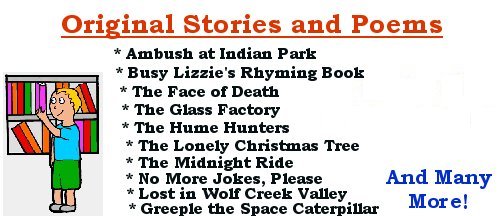
Return to the Say-it-in-English Entry Page
Set 3 - Lesson 8 ( Go to the Answer Key )
 |
Lesson 8, Word Order in Sentences: Where to Place the Nouns, Verbs, Articles and Adjectives
|
English sentences follow a set of rules which governs the position of each of the elements of the sentence between the capital letter at the beginning and the punctuation mark at the end. These rules allow for some variation of position in order to emphasize particular elements within the sentence. Here is an example, growing from the most basic N+TV+N form. |
page break
| 1. Dogs chase rabbits. |
| (subject noun + transitive verb + object noun) |
| 2. The dogs chase the rabbits. |
| (article + sub. noun + trans. verb + article + obj. noun) |
| 3. The large dogs chase the tiny rabbits. |
| (art. + adjective + SN + TV + art. + adjective + ON) |
| 4. The large black dogs chase the tiny brown rabbits. |
| (art + adj + adj + SN + TV + art + adj + adj + ON) |
| 5. The large black dogs hungrily chase the tiny brown rabbits. |
| (art + adj + adj + SN + adverb + TV + art + adj + adj + ON) |
| 6. In the morning, the large black dogs hungrily chase the tiny brown rabbits. |
| (prepositional phrase + art + adj + adj + SN + adv + TV + art + adj + adj + ON) |
| 7. In the morning, the large black dogs hungrily chase the tiny brown rabbits into the woods. |
| (prep. phrase + art + adj + adj + SN + adv + TV + art + adj + adj + ON + prep.phrase) |
That is a lot to absorb. As you can see, this sentence could grow larger and larger by adding more descriptions of the dogs, the rabbits or the chase. Look at it carefully. Do you see the pattern in the sentences above?
|
Exercise A: Write the sentence below five times on the numbered lines, but each time you write it, add one more descriptive word or phrase, similar to the earlier example.
|
1._________________________________________________________________ 2. _________________________________________________________________ 3. __________________________________________________________________ 4. _________________________________________________________________ 5. _________________________________________________________________ |
Exercise B: Unscramble each of the sentences below and rewrite them correctly on the lines. Put the capital letters and periods where they belong. (Example: new drove man a old volkswagon the = The old man drove a new Volkswagon.)
|
1. taking difficult were nurses the test forty __________________________________________________________________ 2. cards John received Mary Christmas beautiful and __________________________________________________________________ 3. telephone the car my shiny night last new pole hit ___________________________________________________________________ 4. slot dollars I fifty the night dropped into deposit ___________________________________________________________________ 5. death valley the hundred rode six into of the ___________________________________________________________________ |
Exercise C: On the numbered lines below, write each of the unscrambled sentences from Exercise B. On the line beneath each sentence, write the Part of Speech of each word or phrase. Use these abbreviations: N = noun; V = verb; Adj = adjective; Adv + adverb; Art = article; PP=prepositional phrase; DO = direct object (same as object noun); SN = subject noun; TV = transitive verb. This will help you to see there is a system of sorts in English word order.
|
1. _________________________________________________________________ ___________________________________________________________________ 2. _________________________________________________________________ ____________________________________________________________________ 3. __________________________________________________________________ ____________________________________________________________________ 4. __________________________________________________________________ _____________________________________________________________________ 5. ___________________________________________________________________ _____________________________________________________________________ |
page break
Examination: The numbered lines below contain the grammatical plans for five sentences. On the line beneath each Plan, write words of your own that match the parts of speech on the line above. There is no one correct answer, and you may have to change words if they do not make sense at first. The important thing is to use words that match the parts of speech in the Plan. Look at this example carefully. There are a limited number of 'sentence plans' in English, but there are millions of sentences made from those plans.
| noun + adverb + verb + article + noun + prepositional phrase |
| Mr. Smith slowly drove the car down the street. |
| Harry angrily punched the door with his fist. |
page break
|
1. prepositional phrase + noun + adverb + verb + adjective + noun + prepositional phrase ______________________________________________________________________ 2. art + adj + adj + noun + prepositional phrase + verb + art + adj + noun _______________________________________________________________________ 3. noun + verb + article + adjective + noun + adverb ______________________________________________________________________ 4. article + adj + adj + noun + verb + adj + adj + noun + prepositional phrase ______________________________________________________________________ 5. noun + verb + article + noun + prepositional phrase _____________________________________________________________________ |
-The End-
| c. 2000 - 2018 Montoursville, 17754 |
 Hundreds of Popular Songs from the 50's, 60's, 70's and 80's.
Hundreds of Popular Songs from the 50's, 60's, 70's and 80's.
Get links to the videos of the songs and lyrics, Wikipedia biographies of the artists, and Then and Now photos.
Practice reading English with the Lyrics of the songs and the histories of the singers and bands at www.mikiemetric.com .